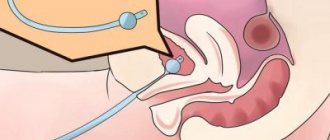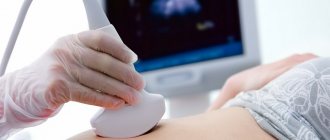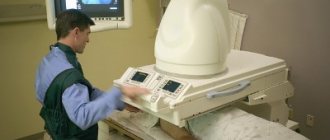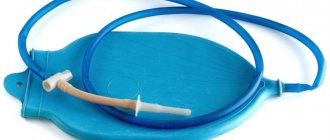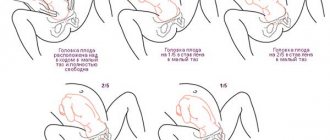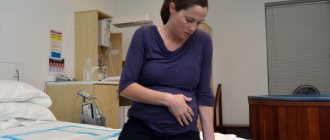When a woman first comes to the antenatal clinic to register, she first of all, on the direction of the doctor, goes to be tested for the presence of sexually transmitted infections and a smear is taken from her vagina.
In order for the child to develop normally, it is simply necessary that the mother’s vagina is absolutely clean. After all, the infection now poses a threat not only to the woman, but also to her baby, who is still very tiny and very weak. Therefore, if the doctor finds at least some pathogenic deviations from the norm, he will begin to actively fight them. When there is very little time left before giving birth. Your doctor may recommend repeat treatment. After all, if the infection is not completely cured, it can cause many unpleasant moments: infection of the child while passing through the birth canal, complications during childbirth and in the subsequent postpartum period, when treatment cannot be done due to the release of lochia and breastfeeding.
Why don’t all women undergo sanitation of the genital tract before childbirth?
Previously, regardless of whether a woman had an infection or not, specialists prescribed sanitation of the birth canal for everyone. After such a procedure, the flora of a healthy woman suffered greatly, and her immunity decreased. Thus, the drugs killed not only pathogenic organisms, but also beneficial ones. Now doctors have begun to examine women more carefully, and medications are prescribed only if there are indications for this.
Throughout pregnancy, a woman may undergo treatment several times. Usually, expectant mothers have to be treated for thrush, because it is precisely this that worsens during pregnancy. Before childbirth, due to hormonal changes and the body’s preparation for the birth process, candidiasis can also worsen. But it also happens that tests reveal other diseases that also require treatment.
Treatment of any disease during pregnancy can only be prescribed by a doctor. But this also requires reasons, so before using any drugs, a woman should be prescribed tests, the results of which will make it clear what needs to be treated. If the doctor prescribes medications just in case, but the woman does not have any infections, they do not need to be taken. In any case, it’s up to the expectant mother to decide, because even the safest products can negatively affect the baby’s health.
Indications for use
Detection of the causative agent of a genitourinary infection in a special smear for flora, which a woman must take at 33-34 weeks of pregnancy, is considered the main criterion for prescribing vaginal sanitation before childbirth. Most often, Candida albicans or Gardnerella vaginalis is detected in a smear in women. Yeast-like fungi of the genus Candida provoke the development of genital candidiasis. This disease is very widespread among women during the reproductive period. During pregnancy, candidiasis tends to recur frequently. The detection of gardnerella indicates a disruption of the normal vaginal microflora, which is also common in pregnant women due to changes in the immune system.
Due to the prevalence of infectious pathologies in pregnant women, the following scheme for vaginal sanitation was previously used. Several weeks before the expected birth, the woman had to use local antiseptic drugs. Due to the use of these medications, in addition to infectious agents, the beneficial microflora of the vagina was also suppressed. To restore it, special preparations containing cultures of bifidumbacteria and lactobacilli were used. However, in practice, it has been revealed that it is inappropriate to prescribe sanitation to all pregnant women for prevention, so now sanitation is carried out exclusively when pathogenic microorganisms are detected in a woman.
Why is it important to treat genital tract infections during pregnancy?
It is worth remembering that there are many medications that are prohibited during pregnancy. Therefore, when prescribing tablets or vaginal suppositories, a woman should check whether pregnancy is a contraindication. It is necessary to treat any infections, because during childbirth they can be transmitted to the baby or cause complications in the mother. For example, if thrush is not treated, during natural childbirth it can be passed on to the baby, and after birth he will have thrush in the mouth. Therefore, you cannot refuse treatment.
20 ways to speed up labor or what to do if labor doesn’t start?
We never tire of sharing a study from 2013, where it was found that only 4% of women give birth at their prenatal period and that the normal pregnancy period varies for women with deltas by as much as three weeks!
One midwife told us this: “Imagine that two apple trees are growing - one is an early ripening one, and the other is an autumn variety. Both bloom in spring, stand in the rain and bask in the sun. But one is designed in such a way that it will have apples already in July, while the other will have apples no earlier than September. All the apples are tasty and rosy, they just ripen at different times.”
But the question still very often arises: “Why doesn’t labor begin at 40 weeks?”
I remember one day a worried dad called me: “How can we speed up the birth? She seems to love being pregnant so much that she won’t even give birth by 45 weeks!”
And sometimes it happens that a woman wants to somehow influence the process and speed up the birth of the baby a little. Sometimes, before the recommended medical induction (labor induction), mothers try gentler ways to start labor.
NB Any, even mild and natural, means to induce labor are an interference in the natural process of the birth of a baby. Check with your doctor and/or midwife before using them.
Is there really cause for concern?
20 ways to speed up labor or what to do if labor doesn’t start?
- Acupressure
MANY POINTS HERE
Why does this work?
Because the specialist stimulates biologically active points associated with the uterus. If it is not possible to visit a trusted specialist, then you can try self-stimulation “based on” in the format of a general relaxing massage with clary sage (a few drops in base oil)
- Alcohol
A glass of wine or champagne, if necessary.
Why does this work?
Under the influence of alcohol, the cerebral cortex is inhibited, a pronounced sedative effect appears - in other words, the woman calms down and stops worrying about every issue. The level of stress hormones decreases again.
Most often, women abstain from alcohol during pregnancy, so even a glass of wine is enough to have a clear effect.
**Attention! If you are categorically against alcohol during pregnancy, you do not need to use this method - there are many others!
- Conversation
Talk to the child, ask him to quickly go to a meeting with mom and dad; talk to each other and discuss ALL possible “what if” options again; talk to a specialist you trust.
Why does this work?
Nobody fully understands about talking to a child, but this advice is given not only by traditional midwives, but also by official doctors.
About conversations with adults - the same effect about reducing stress, sharing responsibility and accepting the situation as it is.
- Homeopathist
Elizabeth Davis, a Californian midwife with 30 years of experience, in her book “Hearts and Hands” recommends taking Cosimifuga 30C once an hour for 8 hours, and then Caulophyllum 30C to ripen and soften the cervix. If the cervix is already soft, then Elizabeth advises taking Caulophyllum 200C once at night.
Why does this work?
It is believed that microdoses of the active substance cause a strong response in the body according to the principle of treating like with like. Randomized studies have not yet confirmed the effectiveness of Caulophyllum for inducing labor. However, this may be due to the need for an individual approach when prescribing homeopathic medicines, scientists say.
**Attention! We recommend using homeopathic medicines only after consultation with a homeopathic doctor or midwife who is trained in the use of homeopathy in childbirth.
***Keep in mind: the effect of medications is reduced by consuming caffeine, tobacco, alcohol and mint (tea, paste, chewing gum).
- Movement
“Shake yourself” with sex, walking up and down the stairs, walking in the park, swinging on a fitball and yes, washing the floors, thanks to Olga Fokina for the reminder!
Why does this work?
In response to physical activity, uterine contractions are triggered and, if the body is ready for childbirth, there is a chance that contractions will become regular and intensify.
- Food
Dates, hot curry, ginger, pineapples, eggplants, licorice, balsamic vinegar, fermented baked milk with cinnamon (thanks to Yulia Karpenko for the recipe).
Why does this work?
If there is already research about dates, then the remaining components of the menu relate to traditional, but not scientifically proven methods. It is believed that the mechanism of action is usually based on two factors: the presence of substances that promote softening and ripening of the cervix, and stimulation of the intestines.
One American pizzeria even serves a special “labor-inducing salad” (green leaves + olive oil and balsamic dressing).
- Class
“Give yourself time...children are born when they are ready for it...” - that’s all true, but how painful it can be to just sit and wait!
Therefore, many women find important and useful things for themselves that are worth finishing before the onset of labor: finding the best-mattress-for-the-crib, learning how to bake a Napoleon cake, creating a wardrobe for after childbirth - sell now, watching all parts of the series “Midwives” or “Fizruk”, submit financial statements. Who knows what will be useful for you?
Why does this work?
Because sometimes you just have to wait.
The onset of labor is associated with the baby's readiness to breathe. If everything is fine with mother and baby (the “Count to 10” test, CTG and regular observation by a doctor/midwife can confirm this), all that remains is to wait for the moment. It is believed that women with a long cycle can add as many days to their PDR as the cycle is longer than 28 days.
- Get rid of constipation
Dried fruits (pre-soak in water for several hours) or sweets made from dried fruits, mild laxatives, and an enema help cleanse the intestines and stimulate excretory processes.
Why does this work?
As you know, mild diarrhea is one of the harbingers of imminent labor. Bowel contractions can stimulate contractions. Emptying your bowels (and bladder) allows your uterus to contract more effectively.
**Attention! Drink thirstily, as severe diarrhea causes dehydration, which, on the contrary, interferes with labor.
- Castor oil
It is often recommended as a “home” method of inducing labor. In Russia, they usually recommend an “obstetric cocktail” (a glass of apricot juice and brut or soda mixed with a couple of tablespoons of ground almonds and castor oil), in America it is often mixed with orange juice. Dosages vary greatly - from 10 to 100 ml. Accordingly, the effect occurs within 3-12 hours. Before the era of synthetic prostaglandins, castor oil was quite officially used for induction in maternity hospitals.
Why does this work?
Castor oil increases the production of prostaglandins, causing a softening of the cervix, and the accompanying diarrhea and intestinal contractions further stimulate the uterus. Studies show that castor oil did not affect the length of labor or the health of the mother or child.
**Attention! Modern midwives are divided in their attitude to inducing labor with castor oil. Many consider its use unjustified, since severe diarrhea causes dehydration, which leads to loss of strength and the prospect of childbirth on the toilet. Also, contractions caused by castor oil may subside within a few hours, which in a maternity hospital will most likely lead to additional interventions to stimulate labor.
- Evening primrose oil
Typically used as a dietary supplement (500-2000 mg per day) and as a perineal massage oil.
Why does this work?
It is believed that gamma-linoleic acid, which is rich in evening primrose oil (evening primrose), helps the production of prostaglandins, which are responsible for cervical ripening.
Scientific research on evening primrose oil is limited and contradictory. Some show no effect, others show faster cervical ripening, and others show a bunch of side effects from an increased risk of bleeding and premature rupture of amniotic fluid to an increase in the duration of labor and more frequent stimulation with oxytocin.
- Meditation
Yes, at least just sit quietly for 10 minutes. You can download a special application for meditation.
Why does this work?
It is believed that meditation helps relieve stress, calm the mind and trigger relaxation mechanisms in the body. This is confirmed by a number of studies (for example, a professor from Harvard even created a special Mind-Body Institute to study the effects of meditation).
- Tenderness and everything that helps you find yourself in bliss and bliss.
A four-hand massage, a bath with foam and essential oils of lavender and rose, lying in bed all day, going to the opera, gourmet eating or going to the bathhouse - everything that previously gave you a feeling of absolute happiness will work now.
Why does this work?
When we relax and enjoy ourselves, the level of stress hormones decreases and oxytocin is produced more easily.
- Osteopath
This is not manual therapy, all manipulations are very gentle. So if you're going for the first time, prepare to be surprised. In most cases, the effect occurs within 2-3 days, and before that many people wonder: did I just spend 3-5-7 thousand on gentle strokes? Give yourself time, it works!
Why does this work?
A gentle effect on muscles and ligaments that helps balance tension and relaxation in the body. Sometimes the baby does not take the optimal position in the uterus and contractions begin and then subside again. An osteopath can help relax the ligaments that support the uterus, allowing the baby to finally get into the best position for birth.
- Relaxation
Some women find that alternating physical activity with intense relaxation helps them calm down and relieve stress. For example, a swimming pool and yoga nidra practice. Or maybe a sauna or just an endless bath with jasmine
Attention! Jasmine essential oil causes uterine contractions
Why does this work?
Sometimes labor does not begin because the woman is tired, worried and afraid. When stress hormones and adrenaline accumulate in the body, the production of oxytocin becomes difficult. Exercise and relaxation help relieve tension and get a rush of endorphins. From this state, starting labor is much easier and more enjoyable.
- Sex
Yes, cunnilingus counts too. Yes, you can do it without a condom. Yes, orgasm is important.
Why does this work?
Firstly, blood flows to the pelvic organs.
Secondly, during orgasm, the hormone oxytocin is released, which, as is known, is also responsible for uterine contractions during childbirth. If the uterine receptors are already sensitive enough, an additional portion of oxytocin can be a trigger.
Thirdly, semen contains prostaglandins, which promote the ripening and softening of the cervix.
- Nipple stimulation
The movements should be quite active, similar to pumping. Some moms even use a breast pump to stimulate their nipples.
Why does this work?
The uterus contracts in response to the release of oxytocin during nipple stimulation. Yes, yes, oxytocin is also needed during breastfeeding - it is responsible for the milk release reflex. Don't be alarmed if you see droplets of colostrum - many mothers already have it in their breasts before giving birth.
- Creation
Keep your hands busy and calm your mind. One of our clients sculpted clay figurines with her eldest son, another learned to crochet, and a third painted mandalas).
It’s enough just to start with what you yourself will enjoy doing. Hints? Soft pastel and drawing “Landscape of Childbirth”, a diary in pictures or a whole DIY project for the nursery.
Why does this work?
Monotonous activities help you get into a rhythm and calm down. Sometimes in this silence it’s no longer so scary to face what really worries you.
- Raspberry leaf tea
It is recommended to brew from 32-34 weeks of pregnancy. You can collect it yourself or buy it from a trusted herbalist (ask at natural childbirth training schools). Popular brands include Yogi Tea for expectant mothers (450 rubles), Earth Mama Angel Baby tea for the third trimester (500 rubles), Health&Heather (200 rubles). Although it is quite possible to get by with a classic local raspberry leaf (from 40 rubles).
Why does this work?
It is believed that raspberry leaf helps balance contractions and promote coordinated labor. A few studies have shown that raspberry leaf helps to start labor on time, reduces the time of pushing (though only by 10 minutes) and reduces the risk of postpartum hemorrhage.
**By the way! Sometimes tablets with raspberry leaf extract are taken instead of tea.
- Cosimifuga
Black cohosh, cornflower cohosh or Black/Blue Cohosh in the form of tincture or tea are recommended by Western midwives. It can be found on iHerb. This is the same plant that forms the basis of the homeopathic remedy.
Why does this work?
The plant is actively used during menopause, as it is a source of plant estrogens. Plus, it causes uterine contractions.
Attention! You should not use it yourself, without the supervision of a doctor/midwife.
- Emotions
Surrender to the experience: cry and/or laugh heartily. For some, it’s enough to watch a touching film by Wes Anderson, while others don’t agree with anything less than a great quarrel with their partner (“how could you think that our son would suck a pacifier!”).
Why does this work?
With laughter, everything is clear - it relieves stress and improves your mood. Tears, it turns out (ha ha, girls have known this for a long time), too. In Holland, scientists found that after crying, almost 90% of people experience a lift in mood. In addition, a crying person is often helped.
***ALL ILLUSTRATIONS BY LOUISE BOURGEOIS
The best drugs to treat infections during pregnancy
Doctors usually prescribe vaginal suppositories for genital tract infections. For example, Nystatin, Fluomizin, Terzhinan, Klion D, Hexicon are considered the most popular. Also, some experts prefer folk remedies, such as a compress with kefir, washing with soda and other similar procedures. But it is worth noting that folk remedies only fight symptoms, and before giving birth, a woman needs to cure the disease itself so that the baby is born healthy and the infection is not transmitted to him.
Also, before giving birth, the expectant mother may be prescribed other medications that prepare the cervix. They do not belong to drugs for sanitation of the birth canal. These are well-known medications - No-shpa, various rectal suppositories. Therefore, the expectant mother needs to distinguish between these drugs in order to understand why they are prescribed. In modern medicine, pregnant women need to be vigilant and check all prescribed medications. You should always ask and find out the reason for prescribing a particular medicine.
How is the procedure performed?
It is better to carry out the procedure under sterile conditions; drugs for treating the genital tract are selected by the doctor individually. To do this, the specialist will ask questions about a history of allergic and other reactions, and will also study the results of preliminary tests (smears for flora, often bacterial cultures from the vagina and cervix). the patient is positioned on a regular gynecological chair. If necessary, medications are tested for allergic reactions. Sanitation is carried out using several methods:
1. Insertion of tampons soaked in antiseptic solutions. Applications of medications are carried out in several stages: the doctor conducts an examination using mirrors, then removes natural secretions using a sterile swab. Then a tampon with the necessary impregnation is inserted and the mirror is removed. The specialist will tell you how many hours later it can be removed; the patient does it herself at home.
2. Performing baths. The specialist installs a speculum and then removes the discharge using sterile cotton balls and a small amount of antiseptic. The rest of the solution is poured into the vagina for 15 minutes. Then the liquid is drained and the mucous membrane is dried with a sterile swab.
3. Vacuum sanitation. The vagina is treated with antiseptic solutions, and the additional procedure includes the targeted action of a vacuum device. Creating vibration allows you to get a more pronounced effect: dead cells are removed, and medications penetrate better into the deep layers of tissue. This method is advisable to use in the treatment of persistent infections.
4. Ultrasonic. Exposure to ultrasound allows you to create small air bubbles, which contribute to the exfoliation of dead epithelium. This is necessary both for better cleansing of the mucous membrane and for stimulating rapid tissue repair. Relevant for drug-resistant colpitis and vulvovaginitis.
Vacuum and ultrasound are not used for pregnant patients. For those who suffer from inflammatory diseases of the urinary system, salpingitis, endometritis, metritis, the advisability of using hardware methods is determined by a doctor.
The number of necessary procedures is also determined by a specialist, taking into account individual characteristics, indications, recovery dynamics and other factors.
The need to sanitize the birth canal before childbirth
Thus, if a pregnant woman is prescribed sanitation of the birth canal before giving birth, this can be considered as cleansing the genital tract from infection and other diseases. There is nothing wrong with this, and most often the treatment does not cause any problems or discomfort. But it is worth remembering one rule: before using medications, you need to get tested. If a doctor prescribes medications for treatment without reason, you need to refuse it. It is also worth remembering that a pregnant woman’s immunity is always slightly weakened, and the use of medications does not have the best effect on it.
However, if there are reasons to use suppositories or tablets, the treatment process simply needs to be completed as soon as possible before giving birth. Then the baby will be born healthy, and the mother will not have complications.
Preparations for sanitation
All medications used for this manipulation must have the following qualities:
- act as quickly and effectively as possible;
- have a wide range of actions and actively eliminate harmful microorganisms;
- have a pronounced effect in the fight against protozoa;
- the increased activity of the drug should not be stopped by the presence of various types of secretions.
Antiseptic drugs are divided into several main groups:
- antiseptics that have a very narrow therapeutic effect (clindamycin, metronidazole);
- multicomponent preparations containing several useful components;
- drugs that have nonspecific effects.
At the present time, one of the universal methods that are used in the complex therapy of inflammatory diseases and surgical interventions is the sanitation of the vaginal cavity using the drug chlorhexidine. This product has a wide range of effects and helps normalize microflora. The positive side of this medication is that it inhibits the growth of lactobacilli. In addition to chlorhexidine, the drug Hexicon is also widely used. The drug is available in the form of suppositories that are used vaginally. Sanitation when using this medicine can be carried out at home.
Features of application
The official instructions recommend using belladonna suppositories rectally, 1 piece 2-3 times a day. The maximum dose is 10 suppositories per day. The duration of the course is determined by the doctor and averages 7–10 days. Suppositories should be used after bowel movements or a preliminary enema. The drug is injected deep into the anus . Before use, it is recommended to wash your hands and anus with warm water. After the procedure, it is advisable to take a horizontal position for some time.
However, when used before childbirth, the dosage regimen is different and is determined by the doctor who has taken upon himself the responsibility of recommending the drug to the woman.
Before inserting a candle into the anus, you should not hold it in your hands for a long time, otherwise it will melt
Reviews from modern gynecologists
Women who used Buscopan suppositories before childbirth on the recommendation of a doctor say that after the course of treatment everything goes well, without ruptures. Of the adverse reactions of patients who use Buscopan suppositories during pregnancy, the most common is dry skin and mucous membranes.
At the same time, reviews of Buscopan suppositories during pregnancy from modern experts are very restrained. They question the influence of any antispasmodics on the tone of the uterus, and all the positive results of using such drugs are attributed more likely to the placebo effect. Doctors also say that the drug is now used less and less in gynecological practice.
We suggest you read: High blood pressure after or before childbirth: causes and treatment
Yulia, 24 years old: the birth was delayed, it was scheduled so that the cervix would ripen faster. I inserted it rectally, and not on the doctor’s recommendation. As a result, there was zero result; artificial stimulation was performed almost at 42 weeks. I regret that I didn’t listen to the doctor. Marina, 29 years old: Second birth, not young. I was very worried.
Buscopan was prescribed in the form of suppositories. Two pieces were enough and I went to get the baby. She gave birth without complications or injuries, even though the baby was large. The doctor said that this drug helped, because... It also increases the elasticity of the walls of the uterus. Olya, 22 years old: Buscopan suppositories were prescribed about 5 days before the expected birth.
I don’t know whether the suppositories really helped, or whether nature took its toll, but I gave birth on time and without tearing. The contractions were quite tolerable, even though I was giving birth for the first time and was expecting something terrible, judging by the stories of my roommates who were already expecting their second babies. The doctor said that the suppositories relieve some pain, so everything went relatively painlessly, as far as one can judge.
Irina, 36 years old: This is my third child. The previous births were not stimulated by anything. This time, the cervix ripened somehow slowly (according to my gynecologist). I read a bunch of nonsense on the Internet that these suppositories are not used during pregnancy. She refused to use them for a long time, until the doctor persuaded her to trust her.
Is there a replacement for belladonna candles?
Analogues of suppositories with belladonna in composition and indications are the drugs Betiol and Anuzol. Along with belladonna, they also contain other substances. Both medications are also contraindicated for use during pregnancy.
There are a number of drugs for the treatment of hemorrhoids and anal fissures (sea buckthorn suppositories, Relief, etc.), which are prescribed for hemorrhoids during pregnancy under the supervision of a doctor. However, they are, of course, not used to prepare the uterus for childbirth.
